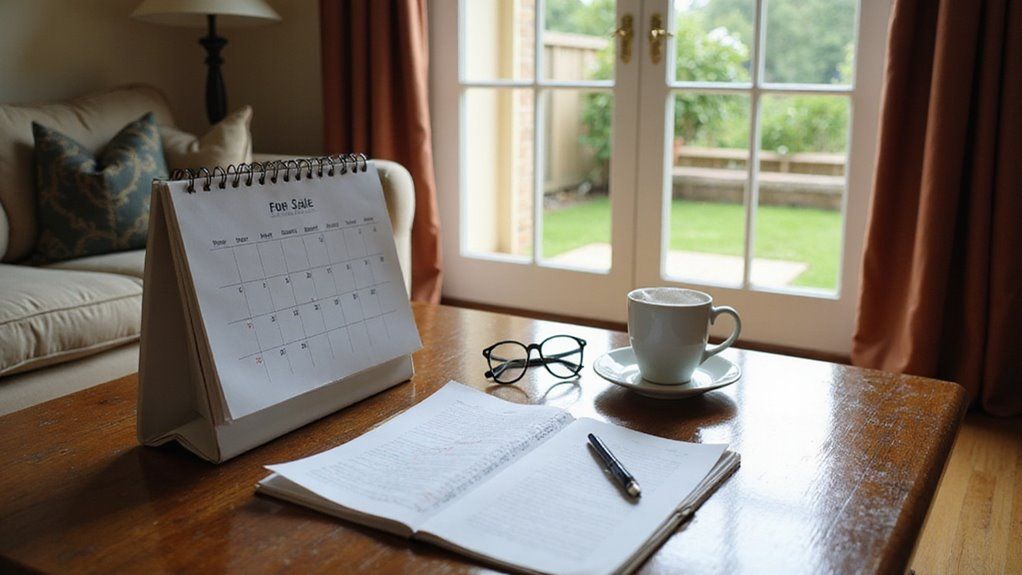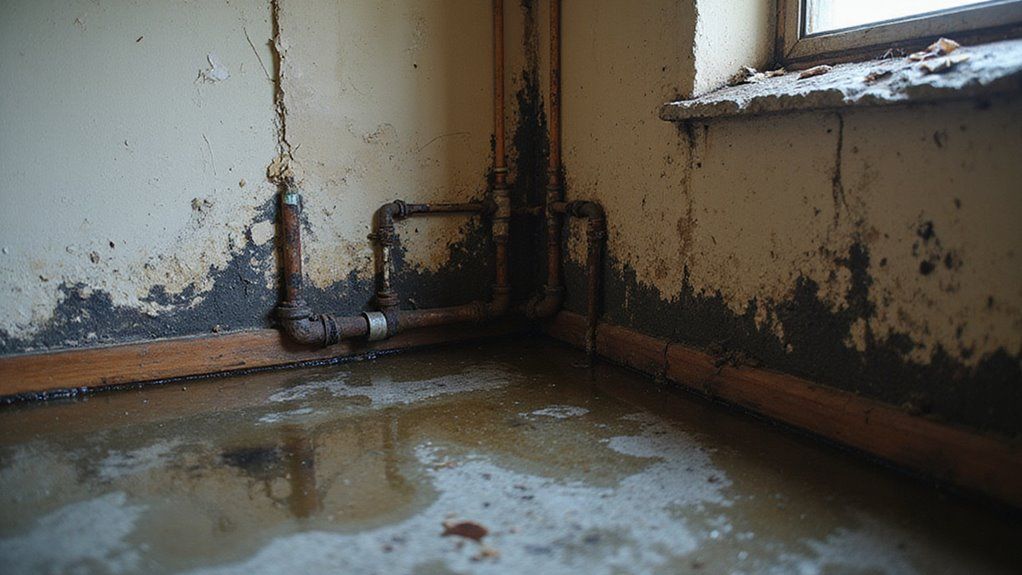How Long to Wait Before Relisting After an Expired Listing

It can be tough when your home listing expires without a sale. Many sellers feel lost about what to do next. Should you relist right away or wait for a better time?
Jumping back in too quickly can repeat old mistakes. Buyers may ignore homes that look stale or unchanged. This can mean more time on the market and possibly a lower price.
The best time to relist after an expired listing is usually two to four weeks, after making key improvements.
Use this short break to review feedback and update your strategy for better results. This blog will guide you step-by-step so you can relist with confidence and attract more serious buyers.
Key Takeaways
- Wait at least 2–4 weeks before relisting to allow the market to reset and reduce stale listing perception.
- Review and address previous listing issues—pricing, photos, and presentation—before relisting to improve buyer interest.
- Monitor local inventory levels and market conditions; relist when competition is lower and buyer demand is higher.
- Time your relist for peak homebuying seasons, such as spring or early summer, for maximum exposure.
- Use feedback from prior showings to adjust strategy and enhance the new listing’s appeal before going back on the market.
Understanding Why Listings Expire
Listings expire when a home does not sell within its listing period. Most often, this happens because buyers do not see enough value or appeal. If a listing expires, owners must reassess their selling strategy.
Price is a main reason homes do not sell. Buyers compare homes by price and features. If your price is too high, they may ignore your home.
Presentation also matters. A well-staged home looks more inviting to buyers. If you skip staging, buyers may not picture themselves living there.
If your listing expires, you should review your price and presentation. Use recent sales data to set a fair price. Consider improving how your home looks before relisting.
Before relisting, it's also important to assess the condition of the home to ensure it meets buyer expectations and stands out in a competitive market.
Assessing the Impact of Days on Market
Days on market (DOM) affect how buyers see your home. If a home stays unsold for too long, buyers may think something is wrong. Long DOM often leads to fewer showings and lower offers. Taking steps to improve your home's curb appeal can help create a positive first impression and reduce the negative impact of a high DOM.
You should compare your home's DOM to your local average. If your listing has more days than average, a new plan is needed. Adjusting your strategy can help reset buyer interest.
Virtual staging can make empty rooms look modern and appealing in photos. Drone photography can show off unique features or neighborhood benefits. These tools may help attract more buyers and reduce negative opinions about high DOM.
Track results after making changes. If you see more interest, your new strategy is working. Make further adjustments as needed. It's also important not to overprice your home, since inflated prices can contribute to longer days on market and make relisting less effective.
Evaluating Current Market Conditions
Before you relist, analyze local inventory trends to see whether competition is rising or falling. Track shifts in buyer demand using recent sales data and showing activity. These metrics will help you time your relisting for maximum impact.
You can also leverage property listing sites to monitor how similar homes in your area are being marketed and to assess the presence of active cash buyers. If you've recently inherited a property, be mindful of legal deadlines and tax implications that may affect your relisting timeline.
Analyzing Local Inventory Trends
To analyze local inventory trends, check how many homes are for sale and how long they stay on the market. Rising inventory means more competition for sellers. If this happens, you may need to adjust your selling plan.
Look at homes in your price range to see if they are selling fast or slow. This helps you understand buyer interest in your area. Nearby construction or renovations can also affect your home’s appeal.
If you track these trends, you can choose the best time to relist. Picking a period with low competition helps your home stand out. This increases your chances of a successful sale when you return to the market.
Assessing Buyer Demand Shifts
Assessing buyer demand shifts means watching for changes in how buyers act. Key signs include showing activity, price drops, and how long homes stay listed. These signs help you understand if demand is strong or weak.
If fewer buyers visit open houses, demand might be lower. Sellers making more or bigger price cuts also signal weaker demand. Longer times on the market show buyers are less eager.
You should look at these trends before relisting. If demand is low, waiting could be better. Adjust your price to stay competitive if you choose to list now.
Analyzing Feedback From Previous Showings
When you analyze feedback from previous showings, you learn what stopped buyers from making an offer. Check all comments from agents and buyers for common themes. If many people mention the same issues, those are likely the main problems.
Focus on repeated feedback about price, condition, or appearance. For example, if several buyers mention outdated features, that is a clear sign to update them. Fixing these issues can help your home sell faster next time. It's also important to consider any feedback related to potential legal and tax implications that could arise if your sale involves foreclosure or other financial distress.
Use this information to change how you present and market your home. Adjust your strategy to remove the problems buyers noticed. If you make these changes, your next listing has a better chance of success. For example, upgrading outdated kitchens or repainting with neutral colors can directly address common buyer concerns and improve your home's appeal.
Reviewing Your Listing Price Strategy
You need to assess recent market trends and compare your home to active and sold listings to pinpoint a competitive price. Look closely at how similar properties are positioned and make data-driven adjustments for any unique features your home offers. This approach ensures your relisting strategy aligns with current buyer expectations and maximizes your chances for a successful sale.
Consulting a professional realtor for a comprehensive market analysis (CMA) can provide valuable guidance when setting your price. Consider whether your home’s current condition might attract cash buyer solutions, which can streamline the process and avoid the need for costly repairs.
Analyzing Recent Market Trends
Recent market trends can affect how you relist your home. You should look at recent sales and neighborhood changes before deciding. This helps you set a realistic price.
Check sales from the last three to six months for homes like yours. Focus on size, age, and condition to compare accurately. Note how long these homes stayed on the market and their final prices.
If mortgage rates drop, more buyers may be interested. Higher rates can mean you need a lower price to attract offers. You might also offer incentives, like a home warranty, to make your property more appealing.
Comparing Competing Properties
When relisting your home, compare it directly to other homes for sale nearby. Check their prices, size, and how long they have been listed. Use this information to see how your home measures up.
If similar homes are cheaper or have better features, consider lowering your price or improving your home. Look at their marketing efforts, like professional photos or virtual tours. Strong marketing can attract more buyers.
Adjusting for Unique Features
Unique features in your home need special pricing. You cannot only copy prices from similar houses. Each upgrade or improvement should be valued.
If you have a modern kitchen or energy-saving systems, check how much value they add. Use local sales data or get a professional appraisal for accuracy. These steps help you set a fair price.
Buyers may pay more for standout features if they see real value. Overpricing could make your home sit on the market too long. It is important to see which upgrades buyers in your area want most.
If you price your home based on these true advantages, you will attract more buyers. Always compare your property’s value to others in your neighborhood. Proper pricing can help you sell faster and more successfully.
Updating Home Staging and Presentation
Updating staging and presentation can help your home sell if it did not sell before. Buyers notice first impressions right away. Small changes can make your home more appealing.
Homeowners should check the condition of each room. Adding modern fixtures or new flooring can raise your home's value. Luxury updates often provide a good return.
If you cannot make physical changes, try virtual staging. Digital images can show buyers how spaces could look when furnished. This option is often less expensive.
Professional photos are important for online listings. Removing clutter helps rooms look bigger and cleaner. These steps can help your home stand out in a busy market.
To further increase your chances, focus on enhancing curb appeal by mowing the lawn, adding fresh flowers, or painting the exterior, since first impressions greatly influence buyers.
Timing the Relist Based on Seasonality
You’ll maximize exposure and sale price by aligning your relist with peak market months, typically spring and early summer when buyer activity surges. If you must relist during the off-season, adjust your strategy to account for reduced demand and longer days on market.
Analyze local sales data to pinpoint the optimal timing for your area. Maintaining curb appeal year-round can help your property stand out, even if you choose to relist outside of traditional peak seasons. Additionally, sellers working with cash buyers may benefit from faster, more flexible closing timelines, which can be especially useful when relisting during less active market periods.
Peak Market Timing
Peak market timing means listing your property when buyer interest is highest. This usually happens in late spring and early summer. Properties sell faster and often for more money during this period.
Families often move before the new school year starts. Waterfront homes also look their best in these months. Serious buyers are more likely to visit and make offers.
If you check recent sales, you can spot trends in prices and how long homes stay on the market. Inventory levels also matter. If fewer homes are for sale, you may get better offers.
If you plan to relist your luxury or waterfront property, choose a peak season. This can help you get more attention and a higher sale price. Careful timing gives your property the best chance for a quick and successful sale.
Off-Season Considerations
The off-season, usually in late fall and winter, has fewer buyers. Sellers can benefit from less competition during this time. If you list your home off-season, your property may stand out to serious buyers.
Some buyers shopping in winter need to move fast. Listing in the off-season can attract their attention. If you want to maximize your chances, consider a few helpful strategies.
Stage your home to feel warm and cozy for winter. Offer flexible showing times to fit buyers’ holiday schedules. Use targeted online marketing to reach people searching during the off-season.
You can use these tactics to make your home more appealing. If you plan carefully, you may get a quicker sale. Off-season marketing can be very effective for motivated sellers.
Consulting With Real Estate Professionals
You can improve your next listing strategy by talking to real estate professionals. They offer helpful advice and know the local market well. If you use their feedback, your listing is more likely to succeed.
Experts can help you set the right price for your home. Correct pricing often leads to a faster sale and better offers. If you consider their analysis of recent sales and neighborhood trends, your price will be competitive. Consulting with professionals also helps you understand the potential obstacles in cash sales, so you can better prepare for any challenges that might arise.
Staging can also make a difference. Well-staged homes attract more buyers and spend less time on the market. If you want a quicker sale, ask your agent for staging tips.
Additionally, real estate professionals can explain the benefits of selling a house for cash in Lakewood, which includes avoiding traditional hassles and receiving a fair, fast offer.
Addressing Issues Identified During the Last Listing
To fix problems from your last listing, focus on what kept buyers away or stopped the sale. Making the right changes before relisting can help your home sell faster.
Good photos and virtual staging can show the home’s best features. If you use high-quality images, your listing may get more views. Buyers are more likely to schedule showings for homes with appealing photos.
Repairs are important if you want buyers to consider your home. Fix leaks, update fixtures, and repaint busy areas if needed. Buyers usually prefer homes that are ready to move in.
If your home did not sell, price could be the problem. You should compare your home to similar ones recently sold. If you set a competitive price, buyers may be more interested.
Addressing these key points gives your property a better chance to sell after relisting. Before you put your home back on the market, conduct a comparative market analysis to ensure your pricing and presentation match current buyer expectations.
Considering Changes in Local Inventory
You should always check local inventory before relisting your home. Look at how many similar homes are for sale and their prices. Fewer homes on the market usually means less competition for you.
Check local inventory before relisting—fewer similar homes for sale can mean less competition and a better chance to sell.
If inventory is high, your home may not stand out. Consider waiting for inventory to drop or improve your home's appeal. Good staging or an open house can help attract buyers.
Recent sales data can show you market patterns. If similar homes are selling quickly, it might be a good time to relist. Seasonal trends also matter, as spring and early summer often bring more buyers.
Aligning your timing with local trends can help you sell faster. Careful planning makes a profitable sale more likely. Always base your relisting decision on current market information.
Improving Marketing and Online Presence
Improving marketing and online presence helps your home attract more buyers. If your home did not sell before, better marketing can help. Most buyers start their search online, so a strong digital presence is important.
If you use social media, you can show clear photos and videos on sites like Instagram and Facebook. These posts can reach more people and create interest in your home. Professional pictures often make your home look more appealing.
When you update your listing, it should have detailed descriptions and virtual tours. This can help your home stand out on real estate websites. If buyers see high-quality content, they may want to schedule a visit.
Targeted online ads can reach people looking for homes in your area. These ads may bring more qualified buyers to your listing. If you use these tools, you can boost showings and improve your chances of selling.
Deciding Whether to Change Agents
When your home hasn’t sold, you need to objectively evaluate your agent’s performance using metrics like days on market and listing-to-sale price ratio. Assess how clearly and consistently your agent communicates, as strong communication directly impacts results. Consider whether your agent’s expertise matches your specific market, since local knowledge can be critical to a successful relist.
Evaluating Agent Performance
Evaluating an agent’s performance helps you decide if you should relist your property with them. Assessing their work provides facts for your next step. This can make your sale faster and more successful.
Check if your agent created a pricing plan using recent market data. Agents should give you a clear plan based on current trends. If they skipped this, you may need to reconsider their approach.
Review how your agent marketed your home. Look at online listing views and attendance at open houses. Ask for feedback from people who toured your home.
Consider if your agent changed their strategy when your home did not sell. A good agent should try new ideas when things are slow. If they did not, you might benefit from a different agent. Careful evaluation lets you make smart and informed choices for your next move.
Assessing Communication Quality
Good communication from your agent is important for a smooth sale. You should check if your agent gave clear updates and quick feedback. If your agent did not keep you informed, you may need to find someone else.
Studies show sellers who get regular updates are more likely to relist quickly. Your agent should explain strategies and answer your questions on time. If you notice slow or unclear communication, this could be a warning sign.
Consider if your agent shared market changes and feedback after showings. If your agent did not listen to your input, it may be time for a change. Choose an agent who keeps you updated and values your concerns.
Considering Market Expertise
Understanding your agent’s market knowledge is important when your home does not sell. An agent’s expertise can affect your home’s selling chances. If your property did not sell, check if your agent used their local knowledge well.
A good agent should know what buyers in your area want. They should suggest staging methods that match local tastes. If your agent did not offer these tips, they may lack market insight.
Safety is also important to buyers. An agent should share neighborhood safety facts and recent crime data. If they did not, buyers may have felt unsure.
Agents must use current market trends to set the right price. If your agent did not use updated data, your home may have been priced wrong. Always review these points before deciding to keep or change agents.
Monitoring Buyer Demand and Interest
Tracking buyer demand and interest helps you adjust your relisting strategy. You should review data like showings, online views, and feedback from your last listing. If you notice low engagement, consider new tactics to attract more buyers.
Virtual staging can make your home look more appealing in photos. Virtual tours let buyers explore your property online, which may increase interest by up to 40%. These tools are useful if in-person visits were low.
You should also watch the number of inquiries and compare your listing to similar homes nearby. MLS analytics can help you find peak interest periods and learn about buyer demographics. If you evaluate demand in real time, you can spot trends and make better choices before relisting.
Setting a Relist Timeline That Maximizes Success
To maximize your property’s success, set a relist timeline based on buyer demand and current market trends. Proper timing can help you attract more buyers. Listings often do best after busy market seasons or when new buyers are looking.
You should review pricing strategies using recent sales data. Adjust your price to match current market demand if needed. This can help your property stand out to buyers.
Staging improvements can make your home more appealing. Professional staging or small updates can improve listing photos. If you invest in these changes, your property may attract more interest.
Relisting during high-traffic periods increases your home’s visibility. Early spring or fall are good times for many markets. Align your relist date with these seasons to reach more buyers.
Conclusion
If you wait 30 to 60 days before relisting, you give yourself time to improve your chances of a sale. Sellers who use this break to review feedback and adjust their listings often see better results. If you relist too quickly, you may face the same issues as before.
If you want to sell your house fast, you have other options. We buy houses for cash, no matter the condition or situation. If you need a quick sale, this can be a simple and stress-free solution.
If you are ready to sell or want to learn more, we are here to help. At Jay Primrose Properties, we make the process easy and fast. Contact us today to get started.
Give us a call anytime at 253-697-0007 or fill out this quick form to get started today!
Get A Fair Cash Offer On Your House

About the author
Justin Baker
Justin Baker is the founder of Jay Primrose Properties, a leading cash home buying company based in Tacoma, WA. With a passion for real estate investing, Justin has helped numerous homeowners in the Pacific Northwest region sell their homes quickly and hassle-free. Justin believes that buying and selling real estate should be a seamless process and works tirelessly to ensure that his clients have a stress-free experience. With a deep understanding of the local real estate market and a commitment to exceptional customer service, Justin has established himself as a trusted and reliable cash home buyer in Tacoma and the surrounding areas.











